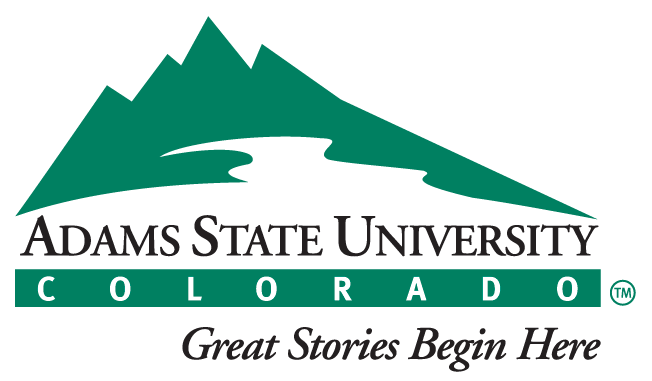Adams State students and community members explored Peru
Article by Linda Relyea
Photos by Dr. Tim Armstrong
Dr. Tim Armstrong led a group of 13 to Peru.
Traveling a narrow “spaghetti” road from near sea level to cloud level, visiting ancient Incan cities, floating down a tributary of the Amazon, the Adams State University adventure to Peru left a lasting impression.
Adams State Professor of Biology Dr. Tim Armstrong led a group of 13 to the country in the summer of 2016. “We had excellent guides,” Armstrong said. “We spent a week on the river, hiked to the top of Huayna/Wayna Picchu near the ancient city of Machu Picchu, observed macaws and parrots at clay licks, and throughout the trip spotted over 120 species of birds and nine species of monkeys.”
For Adams State seniors Clifton Simmons and Cassidie Fisher-Price the opportunity connected with their interests. Both major in physical geography and Simmons also minors in anthropology. As a geographer/anthropologist, experiencing the landscapes of the Peruvian Andes and the historical/cultural importance of the Inca Empire drew him to enroll in the course. “Seeing Machu Picchu was a bucket list goal of mine.”
The ruins of Machu Picchu also enticed Fisher-Price to sign-up for the course as well as traveling through the Amazon and visiting a new country. “I wanted to have the experiences that come with seeing new places, people, and even a new set of stars. I had not yet smelled the air in the southern hemisphere and I thought it was about time.”
Many from the group climbed Huayna/Wayna
Picchu, in the distance near the ancient city of Machu Picchu.
For nearly two weeks the group visited a diversity of locations while marveling at the intricate work of the ancient Incans. “I was shocked at just how extensive the terraces used by the Incans were,” Simmons said. “It seemed no matter how far we traveled outside of the old Inca capitol of Cuzco we would see those terraces carved into the mountain sides all along the route.”
A week boating through the Amazon Rainforest included visiting Manu National Park, an area that is home for several uncontacted tribes. “We didn’t see any of the tribal people who make their homes in that part of the world. You only see them if they want you to see them,” Armstrong said.
The rivers are the “highways” of the Peruvian Amazon. There are many different rivers that drain into the Amazon. Although the head waters of the Amazon begin only 100 miles from the Pacific Coast, the Amazon drains several thousand miles to the Atlantic Ocean. “So much water comes out of the Andes to feed into the Amazon. The river changes its course every year,” Armstrong added. Some lodges that were once right next to the river are now a 15 minute walk away.
The group spent a week in the Peruvian Amazon Rainforest.
While cruising along the river, the group spotted caiman, a relative of the alligator. They also sat in a blind to watch a clay lick. Macaws and parrots come to eat the clay, which provides important nutrients and helps detoxify some of the fruits and seeds they consume. “We also observed sloths, frogs, and a variety of insects.”
Although the Peruvian guides drive the Trans-Amazonian Highway often, the ride lent a form of excitement for the Adams State group that was not always positive. “The crooked spaghetti roads were fine for the drivers who are used to it but it was frightening for some of us,” Armstrong said.
When completed, the coast-to-coast highway will connect the Brazilian Atlantic Ocean with the Pacific Coast in Peru. The Adams State group took the ride from the Peruvian Amazon Rainforest up into the Andes. “It was intense to see the transition in the landscape from near sea level to over 15,000 feet,” Fisher-Price said. “The first time I had serious altitude sickness was on that trip.”
The journey enthralled Simmons. “The drive up into Cuzco was my absolute favorite part of the trip. It really showed how much dynamic landscape can be packed in the seemingly small country.” Along the way, the group marveled at glaciers crowding the small villages. “The mountains were absolutely incredible to witness,” Simmons added.
Baskets of corn and an assortment of potatoes are on display in the marketplace.
Coming from Adams State, Fisher-Price is used to remote areas with small towns but enjoyed the difference of communities in Peru. “The fields and houses were constructed in a way that rolled with the mountainous terrain. Most of what we traveled through was the Peruvian small town equivalent but it was so different from what I knew to be small town. Lots of areas with no electricity, so much farm land and lots of llamas.”
Another common aspect of Peru and the San Luis Valley is the production of potatoes. “We ate lots of potatoes, quinoa and corn,” Armstrong said.
The culture left a lasting impression on Fisher-Price. She recalls an evening the Adams State group ate dinner in Machu Picchu. “That night there had been a parade thrown by the Peruvians celebrating their independence. There were tons of people in costumes and carrying banners, streamers, and horns, singing and dancing. The food was good, drinks tasty, and everybody was having a really good time.”
Simmons agreed: “The local people were incredibly friendly and inviting.”
A Peruvian woman demonstrates the plants used for dyes in her weaving.
Armstrong has organized trips for community and students for several years. Over the years he has helped others experience Australia, Africa, and Costa Rica. “The trip I took with Dr. Armstrong far exceeded my expectations,” Fisher-Price said. “I learned new things about a culture that is so completely different than ours.


